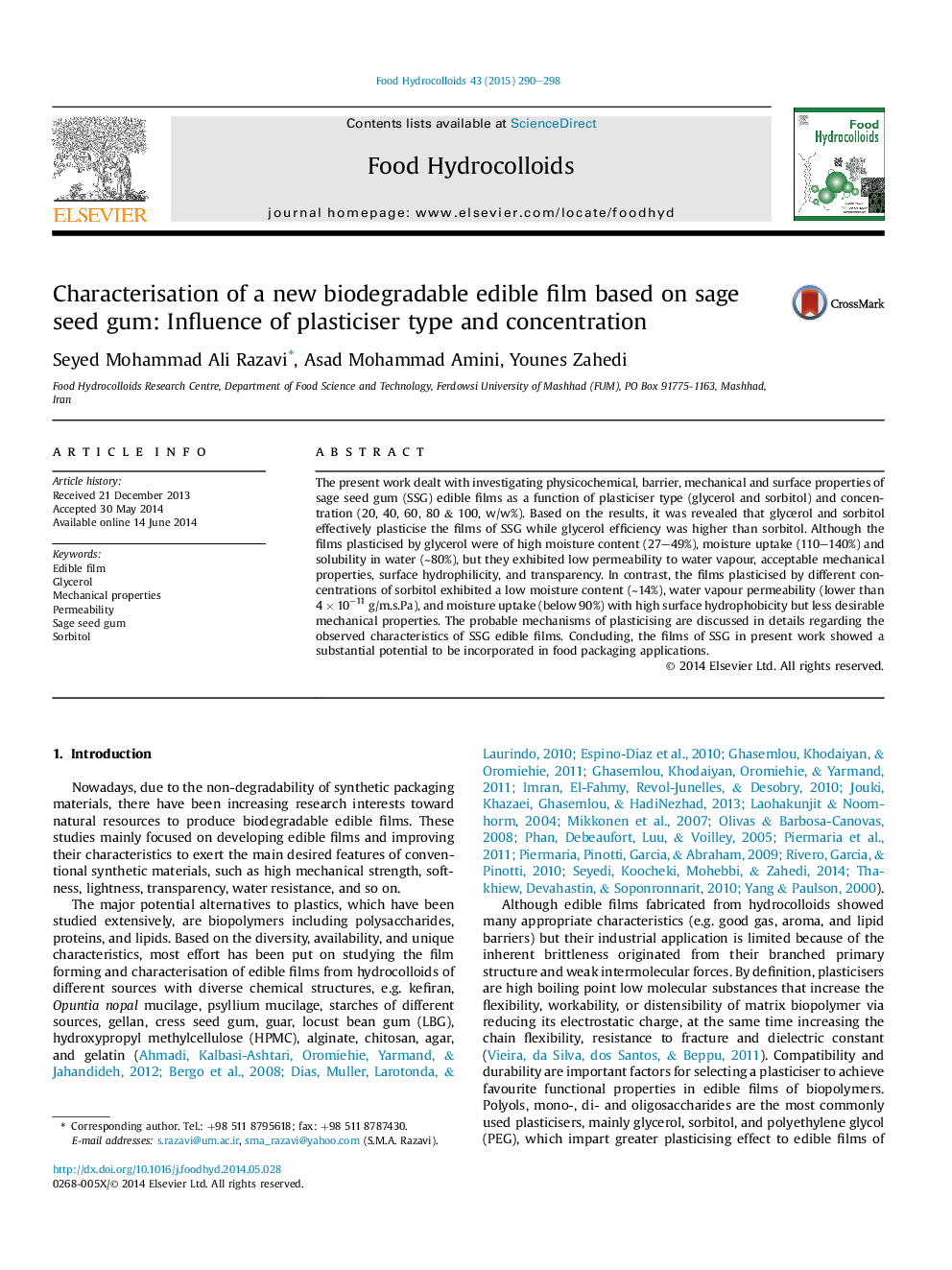| Article ID | Journal | Published Year | Pages | File Type |
|---|---|---|---|---|
| 604656 | Food Hydrocolloids | 2015 | 9 Pages |
•The sage seed gum (SSG) was introduced as a novel biodegradable edible film.•SSG edible films were effectively plasticised by glycerol and sorbitol.•Glycerol showed greater efficiency than sorbitol in plasticising SSG films.•Plasticisers increased heat stability of SSG films.
The present work dealt with investigating physicochemical, barrier, mechanical and surface properties of sage seed gum (SSG) edible films as a function of plasticiser type (glycerol and sorbitol) and concentration (20, 40, 60, 80 & 100, w/w%). Based on the results, it was revealed that glycerol and sorbitol effectively plasticise the films of SSG while glycerol efficiency was higher than sorbitol. Although the films plasticised by glycerol were of high moisture content (27–49%), moisture uptake (110–140%) and solubility in water (∼80%), but they exhibited low permeability to water vapour, acceptable mechanical properties, surface hydrophilicity, and transparency. In contrast, the films plasticised by different concentrations of sorbitol exhibited a low moisture content (∼14%), water vapour permeability (lower than 4 × 10−11 g/m.s.Pa), and moisture uptake (below 90%) with high surface hydrophobicity but less desirable mechanical properties. The probable mechanisms of plasticising are discussed in details regarding the observed characteristics of SSG edible films. Concluding, the films of SSG in present work showed a substantial potential to be incorporated in food packaging applications.
Graphical abstractComparative thermograms of non-plasticised SSG films and plasticised with 100% w/w glycerol and sorbitol.Figure optionsDownload full-size imageDownload as PowerPoint slide
